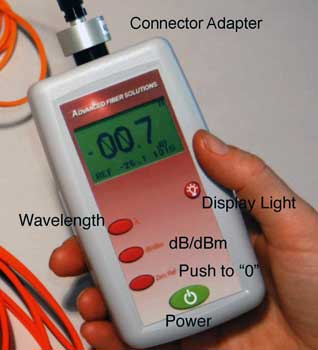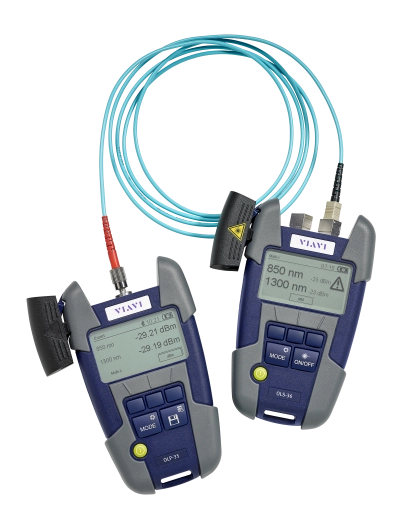Exploring the Impact of Robotic Vision on Modern Manufacturing Techniques and Quality Assurance
Robotic vision technology is changing the landscape of modern manufacturing and quality control. By integrating innovative imaging systems and artificial intelligence, producers can achieve unmatched degrees of accuracy and effectiveness. This shift not only enhances manufacturing procedures however also addresses crucial difficulties in maintaining item criteria. As sectors increasingly count on these developments, the effects for future production techniques continue to be to be fully discovered. What will this mean for the competitive characteristics of the market?
Comprehending Robotic Vision Innovation
Robotic vision modern technology acts as the backbone of automation in modern production. It incorporates the usage of electronic cameras, sensing units, and fabricated intelligence to make it possible for robots to translate and react to visual information from their setting. This modern technology permits robots to identify, situate, and review things, making them efficient in doing complex tasks such as assembly, inspection, and product handling with precision. The assimilation of artificial intelligence algorithms additionally improves the capability of robot vision systems, allowing them to adapt to differing conditions and improve over time. By processing pictures and information in real-time, robot vision systems can facilitate faster decision-making and reduce mistakes in producing procedures (optical fibre diameter analyser). This technology not just enhances operational effectiveness however also ensures that quality standards are met constantly. As the manufacturing landscape remains to advance, understanding the complexities of robotic vision modern technology ends up being important for leveraging its possible fully
Advantages of Robotic Vision in Manufacturing
Robotic vision innovation supplies substantial advantages in manufacturing by boosting precision and accuracy in tasks such as quality control and assembly. This enhanced degree of information assurances that items satisfy strict standards, decreasing waste and remodel. In addition, the combination of robotic vision can result in boosted manufacturing performance, enabling makers to enhance their procedures and attain higher outcome rates.
Enhanced Precision and Accuracy
In modern-day manufacturing, improved precision and accuracy are critical for maximizing manufacturing processes and ensuring item quality. Robotic vision systems make it possible for makers to perform intricate tasks with amazing uniformity. These systems use sophisticated imaging technologies to identify minute information and variants in materials, components, and ended up items. By examining visual data in real-time, robot vision considerably lowers human mistake, leading to less issues and better criteria. Additionally, boosted accuracy in measurements and positioning facilitates much better alignment in assembly procedures, which is essential for detailed layouts. Ultimately, the assimilation of robotic vision not just reinforces the integrity of producing outputs yet additionally fosters self-confidence among consumers relating to item stability and performance. This accuracy is critical in industries where quality is extremely important.
Boosted Production Efficiency

Suppliers are significantly turning to vision systems to improve manufacturing effectiveness across numerous processes. These advanced systems enable real-time inspection and surveillance, considerably lowering downtime created by mistakes or defects. By incorporating robotic vision, companies can automate top quality control, permitting for faster identification of problems and minimizing the need for human treatment. This causes streamlined workflows, as robots can quickly adjust to adjustments in manufacturing demands without giving up precision. Vision systems facilitate better supply monitoring by precisely tracking elements and products, making certain excellent resource application. Eventually, the adoption of robot vision not only improves performance yet also adds to higher result prices, decreased functional expenses, and boosted overall productivity in the manufacturing sector.
Enhancing Quality Assurance Processes
Robotic vision innovation significantly improves top quality control processes in manufacturing by utilizing precision assessment methods. These sophisticated systems promote real-time issue discovery, making sure that items fulfill rigorous quality standards. As a result, makers can lessen waste and improve total efficiency.
Accuracy Evaluation Techniques
Accuracy examination methods have actually transformed quality assurance processes in production, allowing the discovery of min problems that standard approaches might overlook. These methods utilize progressed imaging modern technologies, such as high-resolution video cameras and laser scanning, to accomplish unmatched precision. By utilizing robot vision systems, makers can automate evaluation tasks, guaranteeing consistent performance and reducing human mistake. The assimilation of artificial intelligence formulas additionally boosts these systems, allowing them to adjust and enhance with time. Furthermore, accuracy evaluation facilitates the recognition of refined variations in item dimensions and surface finishes, More about the author which can considerably influence overall item high quality. Consequently, producers can execute rehabilitative activities more quickly, eventually resulting in decreased waste and improved customer complete satisfaction.
Real-Time Flaw Detection
Using advanced imaging modern technologies, real-time defect detection changes top quality control procedures in production. By integrating high-resolution electronic cameras and sophisticated formulas, suppliers can promptly determine anomalies throughout manufacturing. This innovation promotes immediate corrective actions, decreasing waste and improving total efficiency. Real-time systems evaluate products as they move along the production line, guaranteeing that defects are discovered and resolved immediately manufacturing routines. Additionally, the implementation of artificial intelligence improves the accuracy of these systems, permitting them to adjust to new issue patterns gradually. As a result, makers gain from improved item high quality and decreased operational costs. Inevitably, real-time issue discovery not just simplifies procedures yet additionally promotes a culture of continuous renovation in modern-day manufacturing settings.
Real-Time Information Evaluation and Decision Making
In the vibrant landscape of manufacturing, real-time data evaluation empowers systems to make swift, educated choices. By leveraging sophisticated robot vision innovations, makers can gather and process large quantities of data instantly. These systems assess visual inputs to monitor production procedures, ensuring that any type of variances from high quality criteria are found and dealt with without delay. As a result, makers can optimize procedures by reallocating sources and changing process based upon real-time insights.
The combination of data analytics enables for anticipating upkeep, where possible equipment failings are prepared for prior to they interrupt manufacturing. This aggressive method decreases downtime and boosts total performance. fibre testing equipment. The capability to make data-driven decisions in genuine time significantly reduces waste and improves item quality, permitting producers to reply to market needs promptly. As an outcome, real-time data evaluation not just simplifies manufacturing but likewise fosters a society of constant improvement in modern-day manufacturing settings
Difficulties in Carrying Out Robotic Vision Solutions
Applying robot vision systems in manufacturing presents Check Out Your URL an array of obstacles that can prevent their effectiveness. One substantial obstacle is the intricacy of incorporating these systems with existing equipment and process. Makers frequently deal with compatibility concerns with tradition tools, resulting in raised costs and downtime. Furthermore, the irregularity in item forms, dimensions, and materials can make complex the calibration of vision systems, necessitating comprehensive training and fine-tuning.
One more challenge exists in processing big quantities of aesthetic data in actual time. High-performance computing sources are important, which might require additional investment in framework. Additionally, there is a scarcity of experienced employees with the ability of handling and maintaining these advanced systems, resulting in prospective functional inefficiencies. Making sure the reliability and precision of robotic vision systems under differing ecological problems postures a continuous obstacle. Dealing with these concerns is crucial for maximizing the possible benefits of robotic vision in manufacturing.
Future Fads in Robotic Vision for Manufacturing
As developments in fabricated knowledge and maker learning remain to develop, the future of robot vision in production appears significantly promising. Emerging trends suggest a change towards extra innovative imaging innovations, such as 3D vision systems and hyperspectral imaging, which will certainly enhance precision in quality assurance processes. Integration with the Web of Points (IoT) will certainly enable real-time information evaluation, permitting robot systems to adjust swiftly to modifications in the production environment. The growth of collective robots (cobots) outfitted with innovative vision capacities is expected to assist in smooth human-robot interactions, enhancing efficiency and security on the manufacturing facility flooring. Furthermore, the unification of side computing will certainly encourage robotic vision systems to process data locally, lowering latency and making it possible for faster decision-making. These advancements will not only improve producing procedures however additionally significantly enhance item high quality, positioning robot vision as a keystone of future industrial procedures.
Regularly Asked Inquiries
How Much Does Robotic Vision Innovation Normally Price?
Robotic vision innovation usually costs between $10,000 click and $100,000, relying on the intricacy and specs. Variables influencing cost consist of sensing unit high quality, software application abilities, and integration needs, making it important to examine certain job demands.
What Industries Are Most Influenced by Robotic Vision Improvements?
Robotic vision innovations greatly influence industries such as manufacturing, automotive, electronic devices, and food processing - optical fibre diameter analyser. These fields gain from boosted automation, improved quality assurance, and raised efficiency, causing structured operations and decreased labor expenses
Can Robotic Vision Solutions Be Integrated With Existing Equipment?
Robotic vision systems can undoubtedly be incorporated with existing machinery. This combination improves operational efficiency, enabling suppliers to utilize progressed innovations without the requirement for full overhauls, thus optimizing manufacturing procedures and preserving top quality requirements.

What Skills Are Called For to Run Robotic Vision Equipments?
Running robotic vision systems necessitates efficiency in shows, an understanding of machine discovering, expertise of image processing methods, and the capacity to troubleshoot software and hardware problems, guaranteeing smooth combination and perfect efficiency within producing settings.
Exist Any Kind Of Security Interest In Robotic Vision in Manufacturing?
